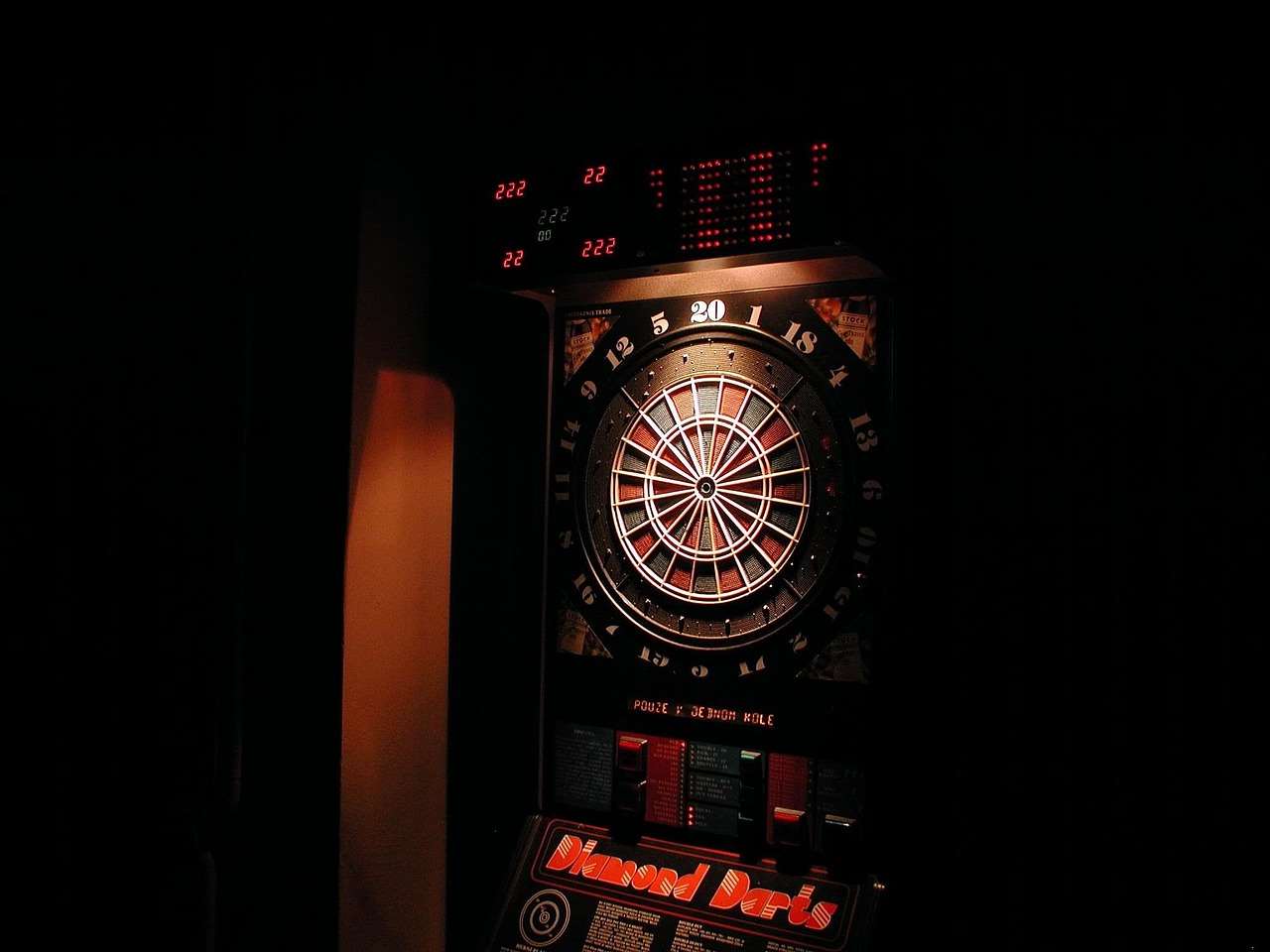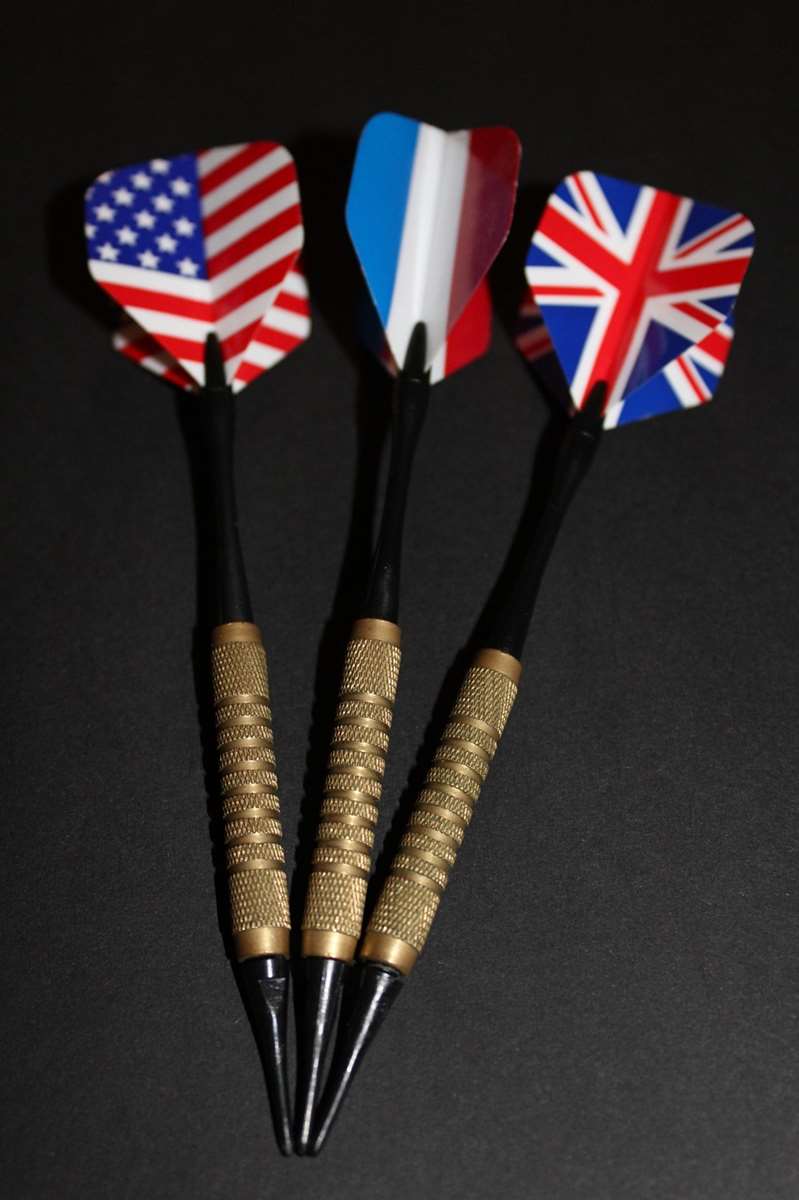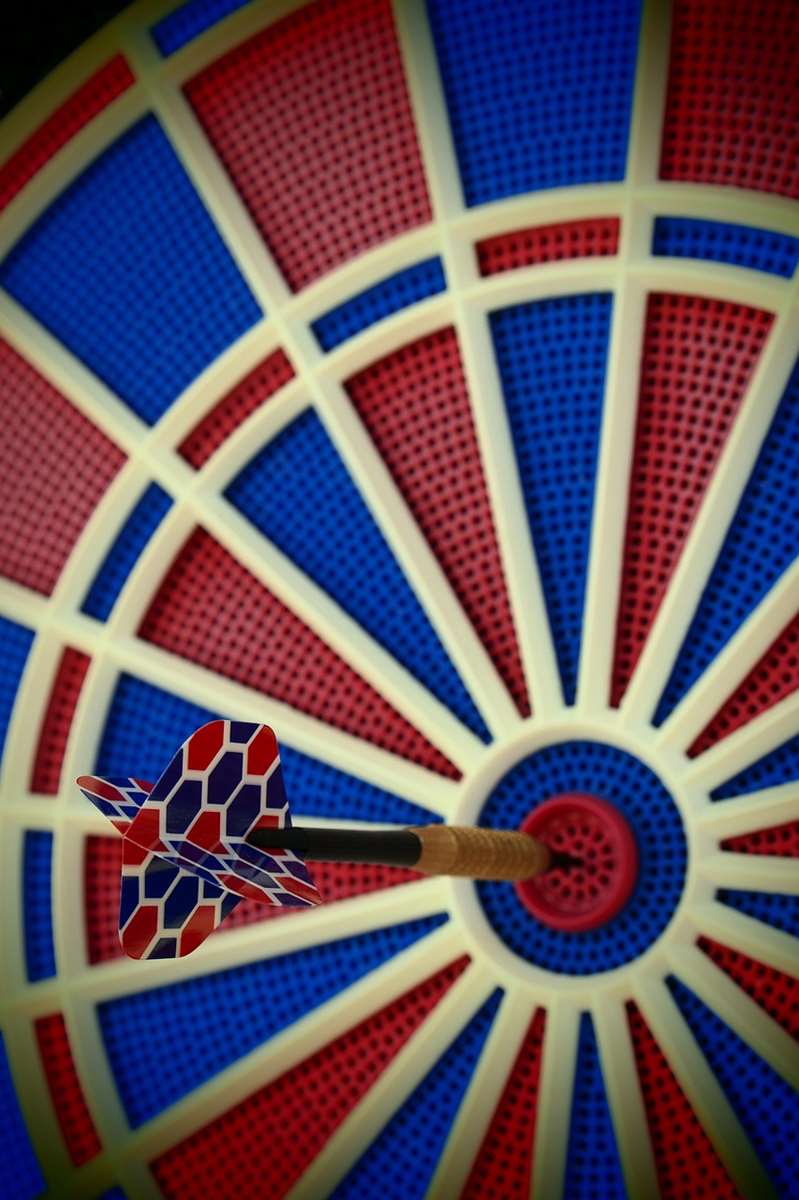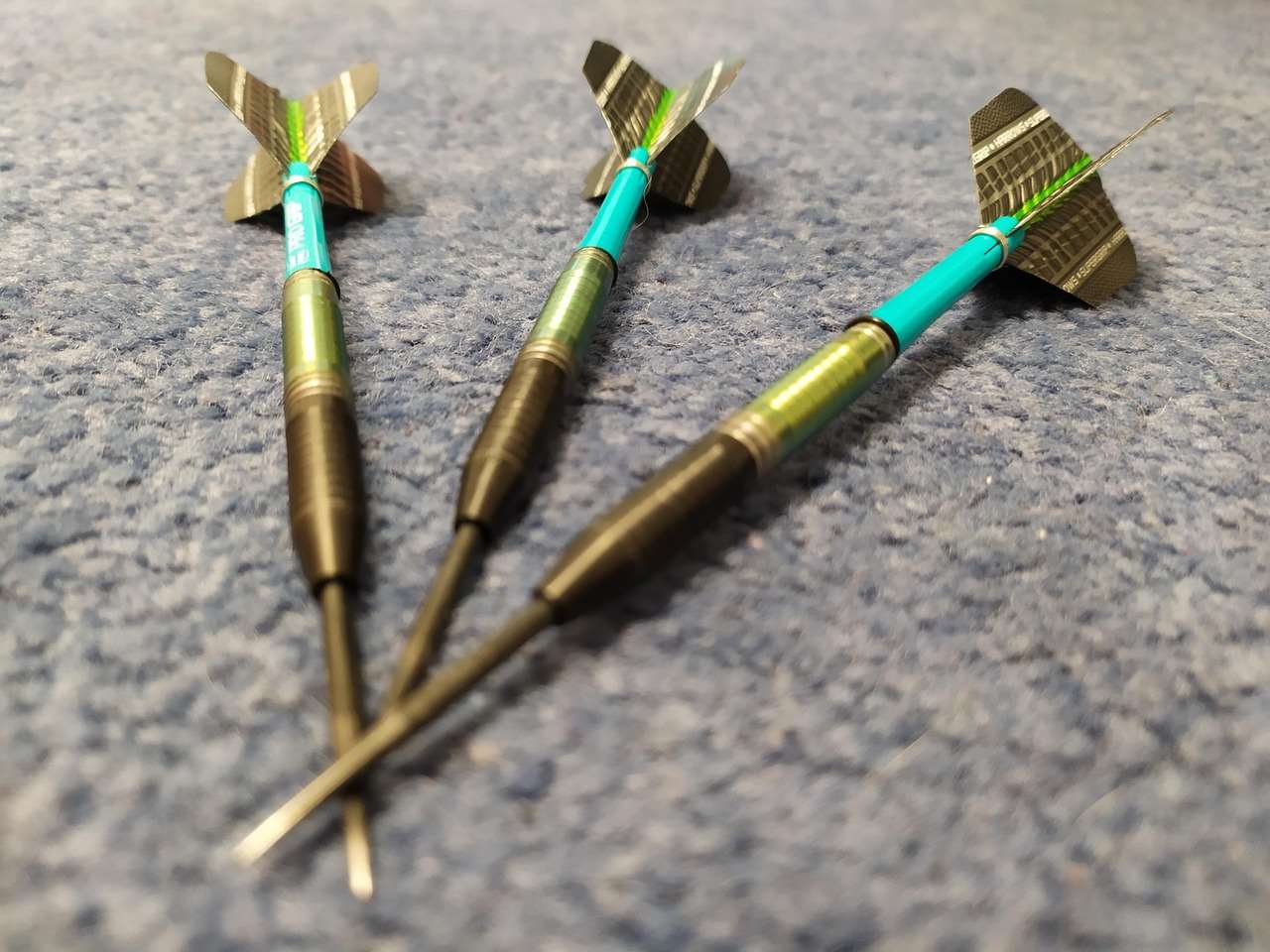Understanding the **darts scoring system** doesn’t have to be complicated! Simply put, you score points based on where your dart lands on the board, with the goal of reaching zero from a starting number, typically 501 or 301; this article provides a straightforward explanation, covering everything from the board’s layout to common scoring strategies.
⚠️ Still Using Pen & Paper (or a Chalkboard)?! ⚠️
Step into the future! The Dart Counter App handles all the scoring, suggests checkouts, and tracks your stats automatically. It's easier than you think!
Try the Smart Dart Counter App FREE!Ready for an upgrade? Click above!
The Darts Board: A Beginner’s Guide to Understanding the Layout
The standard dartboard is divided into 20 numbered sections, each radiating from the center like slices of a pie. These sections are numbered from 1 to 20, and understanding their arrangement is crucial for strategic play. Notice that high-scoring numbers are often placed next to low-scoring ones; this adds an element of risk and reward to the game. Learning the board layout is the first step in mastering the **darts scoring system explained simple**.

Within each numbered section, you’ll find different scoring areas:
- Single Area: The largest area of each section. Landing a dart here scores the value of the number for that section.
- Double Ring: The outer ring of the board. Landing a dart in this ring doubles the value of the corresponding section. For example, a dart in the double-20 scores 40 points.
- Treble Ring: The inner ring of the board. Landing a dart in this ring triples the value of the corresponding section. A dart in the treble-20 scores 60 points.
- Bullseye: The center of the board. The outer green ring is worth 25 points (often called “single bull”), and the inner red circle is worth 50 points (the “double bull” or just “bull”).
Understanding these areas is key to calculating your score and planning your next throw. It allows you to implement different **darts strategies**.
Darts Scoring System Explained Simple: Core Rules
The most popular darts game, 501 (or 301), involves two players or teams starting with that score and working their way down to zero. Here’s a breakdown of the core rules for understanding **darts scoring system explained simple**:
- Starting Score: Each player or team begins with 501 (or 301).
- Turns: Players take turns throwing three darts.
- Scoring: The points scored from each throw are subtracted from the player’s remaining score.
- Busting: If a player’s score goes below zero, or reaches one, the turn is voided, and the player’s score reverts to what it was at the start of that turn. This is known as “busting.”
- Checkout: To win, a player must reach exactly zero, and the final dart thrown must be a double (or the bullseye, which counts as a double 25). This is known as a “double out” or “checkout”. If the player hits a number that would result in going below zero (or one), they bust.
For instance, if you have 32 left, you could hit a double 16 to win. If you have 40 left, hitting a single 20 followed by a double 10 will check you out. Missing the double is frustrating, so aim carefully!
Want to get started? You can look at Basic Darts Fundamentals for Beginners to start your darts journey.
Calculating Your Score: Tips and Tricks
Keeping track of your score is essential. While many apps and scoring systems are available, learning to calculate your score manually can improve your game and understanding of the **darts scoring system explained simple**. Here are some tips:
- Add Up Your Darts First: Before subtracting from your total, add up the scores from your three darts. This reduces the chance of errors.
- Double-Check: Always double-check your calculations, especially when nearing the end of the game. An incorrect score can lead to a bust and a lost opportunity.
- Use a Scoreboard: A traditional chalkboard or whiteboard is a great way to keep track of scores. This allows you and your opponent to easily see the remaining scores.

Consider practicing simple addition and subtraction in your head to improve your speed and accuracy. This will make you a more confident and efficient player.
Sometimes, you might need Adapting darts rules for small spaces: tips and tricks.
Strategic Scoring: Maximizing Your Points
Beyond understanding the basic rules, strategic scoring involves aiming for specific targets to maximize your points and set yourself up for a successful checkout. Here’s how:
- Aim for the Treble 20: The treble 20 (T20) is the highest-scoring segment on the board. Consistent accuracy here will quickly reduce your score.
- Set Up Your Checkout: As you approach the end of the game, plan your throws to leave yourself with a manageable double. Common checkout numbers include 32 (double 16), 40 (double 20), and 50 (bullseye).
- Be Aware of Bust Numbers: Avoid leaving yourself with scores like 1, which is impossible to checkout on.
Effective scoring requires practice and a good understanding of the board’s layout. Knowing which numbers to aim for in different situations is a key skill for any darts player.
For mixed-level dart players, think about Modifying rules for mixed-level dart players to make the game fairer.
Common Darts Scoring Mistakes to Avoid
Even experienced players make mistakes. Here are some common scoring errors and how to avoid them:
- Miscalculating Scores: Double-check your math, especially when close to zero.
- Busting on Checkout: Always remember that you need a double to finish. Don’t throw blindly!
- Not Knowing the Board: Familiarize yourself with the board’s layout to avoid accidentally hitting low-scoring segments.

Paying attention to these details can significantly improve your scoring consistency and reduce frustration during the game.
Variations on the Standard Darts Scoring System
While 501 is the most popular game, many variations exist, each with its unique scoring system. Here are a couple of examples:
- Cricket: In Cricket, players score by hitting specific numbers (20, 19, 18, 17, 16, 15, and the bullseye) three times each to “open” them. Once a number is opened, a player scores points on that number until their opponent also “closes” it by hitting it three times.
- Around the Clock: Players must hit each number on the board in sequence, from 1 to 20. The first player to complete the sequence wins.

These variations offer a fun alternative to the standard game and can help you develop different dart-throwing skills. Plus, you can find Fun dart game variations with modified rules.
Advanced Checkout Strategies and Combinations
As you improve, you can learn more complex checkout strategies. For example, if you have 170 left, the ideal combination is treble 20, treble 20, and bullseye. Here are some tips for refining your checkout game:
- Learn Common Combinations: Familiarize yourself with the best ways to checkout from scores like 170, 164, 161, and other common numbers.
- Practice Under Pressure: Simulate game situations in practice to improve your ability to checkout under pressure.
- Analyze Your Opponent: Pay attention to your opponent’s checkout patterns and tendencies to anticipate their next moves.

Mastering these advanced techniques can give you a significant edge in competitive play. Consider if How to make darts fairer with handicap rules is right for your group.
Further Resources for Mastering Darts Scoring
Learning the **darts scoring system explained simple** is only the beginning. Here are some additional resources to help you improve your game:
- Online Tutorials: Many websites and YouTube channels offer in-depth tutorials on darts scoring and strategy.
- Darts Calculators: Use online darts calculators to help you plan your checkouts and analyze your performance.
- Join a Darts League: Competing in a local darts league is a great way to gain experience and learn from other players.
With dedication and practice, you can become a skilled darts player and master the art of scoring.
Conclusion: Putting Your Darts Scoring Knowledge to Practice
By now, you should have a clear understanding of the **darts scoring system explained simple**. From the layout of the board to advanced checkout strategies, you’re equipped with the knowledge to improve your game. Remember to practice consistently, analyze your performance, and most importantly, have fun! Now that you understand the basics, grab your darts and start practicing. Aim for that treble 20, plan your checkouts, and enjoy the game! Ready to take your game to the next level? Find a local darts league or practice with friends. The more you play, the better you’ll get. Don’t forget to share this article with your fellow dart enthusiasts so they can learn the **darts scoring system explained simple** too!
Hi, I’m Dieter, and I created Dartcounter (Dartcounterapp.com). My motivation wasn’t being a darts expert – quite the opposite! When I first started playing, I loved the game but found keeping accurate scores and tracking stats difficult and distracting.
I figured I couldn’t be the only one struggling with this. So, I decided to build a solution: an easy-to-use application that everyone, no matter their experience level, could use to manage scoring effortlessly.
My goal for Dartcounter was simple: let the app handle the numbers – the scoring, the averages, the stats, even checkout suggestions – so players could focus purely on their throw and enjoying the game. It began as a way to solve my own beginner’s problem, and I’m thrilled it has grown into a helpful tool for the wider darts community.